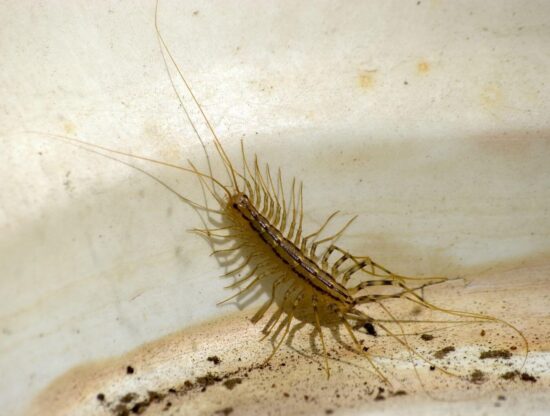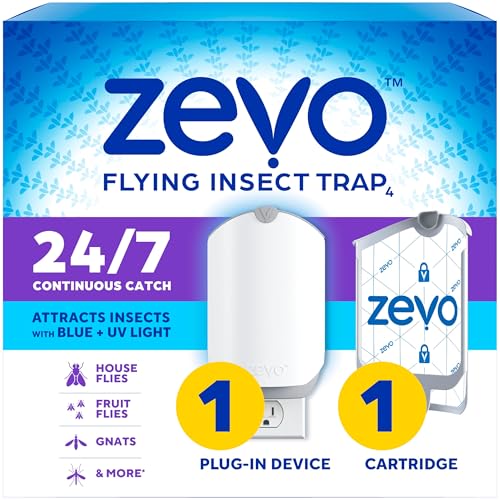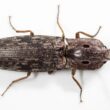Finding a house centipede scurrying across your floor can be quite the shock. These fast-moving creatures with their many legs can make anyone jump. While house centipedes (Scutigera coleoptrata) actually help by eating other bugs like cockroaches and spiders, many homeowners still want them gone.
House centipedes come inside looking for three main things: moisture, food, and shelter. They love damp areas like basements and bathrooms, and they hunt other insects at night. The good news is that getting rid of house centipedes doesn’t have to be complicated or expensive.
This guide will teach you some proven methods for how to get rid of house centipedes, from simple natural solutions to professional treatments. Most homeowners find success by combining several approaches rather than relying on just one method.
1. Reduce Moisture and Humidity Levels
Moisture control is the most important step in getting rid of house centipedes. These creatures need high humidity to survive because they don’t have the waxy coating that helps other bugs retain water. In dry environments, centipedes will actually dehydrate and die or leave to find a more suitable home.
Start by placing dehumidifiers in your basement, crawl spaces, and bathrooms. Keep indoor humidity below 50% if possible. Install exhaust fans in areas that get steamy, like bathrooms and kitchens. Run these fans during and after showers or cooking to remove excess moisture from the air.
Fix any leaky pipes or plumbing problems right away. Even small drips can create the damp conditions centipedes love. Check under sinks, around toilets, and in basement plumbing areas for signs of water damage or ongoing leaks.
Look at the area around your home’s foundation too. Make sure water drains away from the house after rain. Clean gutters regularly and fix any drainage problems that cause water to pool near your foundation. Standing water creates the perfect breeding ground for centipedes and the insects they eat.
These moisture control steps often solve centipede problems within a few weeks. Many homeowners see a big reduction in centipede sightings just by keeping things dry.
2. Seal Entry Points and Cracks
Centipedes can squeeze through surprisingly small openings, so sealing up your home is crucial for long-term control. Walk around both inside and outside your house looking for gaps, cracks, and holes where these pests might enter.
Use caulk to seal gaps around windows and doors. Pay special attention to areas where pipes enter your home, as these often have small spaces that centipedes can use. Apply weatherstripping to doors and windows to close off any remaining gaps.
Check your foundation carefully for cracks, especially in basement walls. Use concrete crack filler or expanding foam to seal larger openings. For smaller cracks, regular caulk works fine. Don’t forget to look at areas where utilities enter your home, like cable lines and gas pipes.
Install door sweeps on exterior doors, especially those leading to basements or crawl spaces. Replace any damaged window screens, as even small tears can provide entry points.
In basements and crawl spaces, look for gaps where the foundation meets the floor or walls. These areas often get overlooked but can be major entry points. Expanding foam works well for filling these larger spaces.
This sealing process might take a weekend, but it creates a strong barrier that keeps centipedes and other pests outside where they belong.
3. Use Essential Oil Repellents
Essential oils provide a safe, natural way to repel centipedes without using harsh chemicals. Centipedes have a very strong sense of smell, and certain scents are overwhelming to them.
Peppermint oil is one of the most effective options. Mix 25 drops of peppermint essential oil with 6 ounces of water in a spray bottle. Shake well and spray around baseboards, door frames, and dark corners where centipedes might hide. The smell is pleasant to humans but drives centipedes away.
Tea tree oil works even better than peppermint for centipede control. Use the same mixing ratio and apply it the same way. Tea tree oil is actually toxic to centipedes, so it doesn’t just repel them but can eliminate them on contact.
Eucalyptus oil is another good choice. You can use it in a spray bottle or put it in a diffuser to spread the scent throughout rooms. Eucalyptus has the added benefit of repelling other insects like mosquitoes and flies.
For a more subtle approach, soak cotton balls in your chosen essential oil and place them in areas where you’ve seen centipedes. Put them behind furniture, in closets, and near entry points. Replace the cotton balls weekly to maintain their effectiveness.
Lavender and cedar oils also work well and provide pleasant, calming scents for your home. You can mix different oils together to create a custom blend that works for your situation.
4. Apply Diatomaceous Earth (Food-Grade)
- Kills fleas, ants, roaches, and more
- Includes powder duster for easy, targeted application
- Works indoors and outdoors, long-lasting when dry
- 100% pure, food-grade, safe around pets and kids
Diatomaceous earth (DE) is one of the most effective natural methods for getting rid of house centipedes. This fine powder is made from fossilized algae and works by damaging the exoskeletons of insects and other crawling pests.
Only use food-grade diatomaceous earth, which is safe around humans and pets. Sprinkle a thin layer along baseboards, around entry points, and in cracks where centipedes travel. The powder works when centipedes crawl through it, as the tiny sharp particles cut their waxy outer coating.
Once their exoskeleton is damaged, centipedes lose moisture rapidly and die from dehydration. This process usually takes 1-2 days after the centipede comes into contact with the DE.
Apply DE in dry areas only, as it becomes ineffective when wet. If you need to treat damp areas, you can mix DE with water in a spray bottle, but it only works after the water evaporates and the powder dries.
Focus on areas where you’ve seen centipede activity. Put extra attention on basement corners, bathroom edges, and spaces around pipes or vents. Reapply the powder weekly or after cleaning to maintain its effectiveness.
Wear a dust mask when applying DE to avoid breathing in the fine particles. While food-grade DE is safe, inhaling any fine dust can irritate your lungs.
5. Use Boric Acid Treatment
Boric acid provides more aggressive control for serious centipede problems. This white powder works in two ways: it acts as a stomach poison when centipedes eat it, and it also damages their exoskeleton on contact.
Sprinkle boric acid powder in areas where centipedes are likely to travel or hide. Focus on basements, crawl spaces, closets, and around windowsills. The powder interferes with centipede metabolism and damages their digestive system when they groom themselves and ingest it.
Unlike diatomaceous earth, boric acid remains somewhat effective even when it gets damp. However, it works best in dry conditions. Apply a thin, even layer rather than thick piles, as centipedes will avoid areas with too much powder.
Keep boric acid away from children and pets, as it can be harmful if eaten in large amounts. Store the powder in a secure location and use caution during application. Wear gloves and avoid getting the powder on your skin, as it can cause irritation.
Mark treated areas so family members know to avoid them. Clean up any excess powder in areas where people or pets spend time, but leave thin applications in hidden areas where centipedes travel.
Results typically appear within a week of application. Reapply monthly or as needed to maintain control.
6. Clean Drains with Vinegar Solutions
Drains provide perfect hiding spots for centipedes because they’re dark, damp, and often contain organic matter. Regular drain cleaning can eliminate centipedes that have made their home in your plumbing.
Pour half a cup of white vinegar down each drain in your home. Let it sit for one hour, then pour another half cup down the same drains. The acidic vinegar kills centipedes hiding in the pipes and breaks down organic matter they might be feeding on.
For extra cleaning power, add half a cup of baking soda to the drain before the vinegar. This creates a bubbling reaction that helps clean away debris and can kill bugs hiding in the pipes. Follow with the vinegar treatment after the bubbling stops.
Pay special attention to bathroom and kitchen drains, as these tend to have the most moisture and organic buildup. Don’t forget about floor drains in basements or laundry rooms, as these often get overlooked.
Never mix vinegar with bleach, as this creates toxic fumes. If you want to use bleach instead of vinegar, mix one cup of bleach with one cup of water and pour it down the drain. Wait 15 minutes, then flush with plenty of water.
Repeat this drain cleaning process weekly for the first month, then monthly for maintenance. Regular cleaning prevents centipedes from establishing homes in your plumbing.
7. Set Up Sticky Traps
- Attracts gnats, fruit flies, and house flies using blue and UV light
- Mess-free adhesive cartridge for easy and hygienic disposal
- Silent, odorless operation perfect for kitchens and bedrooms
- Plug-in design works 24/7 to catch flying insects indoors
Sticky traps provide an excellent way to monitor and control centipede populations without using pesticides. These traps work around the clock, catching centipedes as they hunt for food at night.
Place traps along baseboards in areas where you’ve seen centipede activity. Basements, bathrooms, and dark closets are ideal locations. The traps should sit flat against the floor in corners or along walls where centipedes typically travel.
Use traps designed for small insects rather than larger pests like mice. The adhesive needs to be strong enough to hold a fast-moving centipede but sensitive enough to activate when they step on it.
Check traps weekly and replace them when they become full or lose their stickiness. Don’t wait too long to replace them, as other insects might get stuck and actually attract more centipedes looking for an easy meal.
Sticky traps also catch the insects that centipedes eat, which helps reduce their food supply. You might catch spiders, cockroaches, silverfish, and other small pests that centipedes prey on.
Keep a log of where you catch the most centipedes. This information helps you focus your other control efforts on the most active areas. Many homeowners find that centipede activity decreases significantly after a few weeks of consistent trapping.
8. Vacuum Regularly and Thoroughly
Regular vacuuming removes centipedes, their eggs, and the debris that attracts them. This simple method works immediately and helps prevent future problems when done consistently.
Use a high-powered vacuum for best results, as centipedes move quickly and can escape weaker suction. Focus on areas where centipedes hide: behind furniture, along baseboards, in closets, and under appliances.
Pay special attention to carpeted areas, as these can harbor both centipedes and their prey. Vacuum weekly at minimum, but daily vacuuming in problem areas works even better during active infestations.
Immediately after vacuuming up centipedes, remove the vacuum bag or empty the canister into a sealed plastic bag. Dispose of the bag in your outdoor trash to prevent any surviving centipedes from escaping back into your home.
Don’t forget to vacuum cracks and crevices using your vacuum’s attachment tools. These areas often contain centipede eggs and small insects that centipedes feed on. Regular vacuuming disrupts their breeding cycle and removes their food sources.
Vacuuming also helps you monitor the situation. If you’re consistently finding centipedes in the same areas, you know where to focus your other control methods for maximum effectiveness.
9. Eliminate Other Household Pests
Centipedes eat other bugs, so reducing the overall insect population in your home often solves centipede problems naturally. When their food disappears, centipedes usually move elsewhere to hunt.
Start by identifying what other pests you have. Common centipede prey includes cockroaches, spiders, silverfish, ants, flies, and even bed bugs. Use sticky traps throughout your home to see what insects are present.
Address each pest problem individually. For cockroaches, use bait stations and eliminate food sources. For ants, find and treat their entry points. For spiders, reduce clutter and vacuum up webs regularly.
Keep your home clean to reduce food sources for all insects. Wipe down counters, sweep floors, and store food in sealed containers. Take out trash regularly and keep garbage cans clean.
Focus on moisture control for insects that need water, like silverfish and cockroaches. Many of the same steps that repel centipedes also control their prey insects.
Consider using a broad-spectrum approach like perimeter spraying around your home’s foundation. This creates a barrier that reduces the number of insects entering your house, which naturally reduces the centipede population too.
Monitor your progress by continuing to use sticky traps. As other insect populations decrease, you should see fewer centipedes over time.
10. Declutter and Remove Hiding Spots
Centipedes need places to hide during the day, so removing clutter makes your home less attractive to them. This method works particularly well in combination with other control strategies.
Start with your basement and storage areas. Remove piles of newspapers, cardboard boxes, and items you don’t need. Store necessary items in sealed plastic containers rather than cardboard boxes, which can harbor moisture and provide hiding spots.
Clear out crawl spaces as much as possible. Remove any stored items that aren’t absolutely necessary. The more open and clean these areas are, the less attractive they become to centipedes.
Outside your home, move firewood at least 30 feet away from the house. Firewood piles provide perfect centipede habitat and breeding grounds. Stack wood off the ground on racks when possible.
Remove leaf litter, grass clippings, and other organic debris from around your foundation. These materials retain moisture and provide food for the insects that centipedes eat.
Keep storage areas organized and clean. Vacuum and dust these areas regularly to remove insects and organic matter that attract centipedes.
In living areas, reduce clutter around baseboards and in corners. Keep storage minimal in basements and avoid storing items directly on floors where moisture can accumulate underneath.
11. Create Physical Barriers
Physical barriers around your home prevent centipedes from reaching your house in the first place. These modifications provide long-term protection with minimal ongoing maintenance.
Replace thick mulch beds with a 12 to 24-inch barrier of gravel or decorative stone around your home’s perimeter. Mulch retains moisture and provides habitat for centipedes and their prey. Gravel and stone dry quickly and don’t provide good hiding spots.
If you prefer to keep mulch for your plants, rake it every 4 to 6 weeks to help it dry out. Avoid placing mulch directly against your foundation. Leave a gap of at least 6 inches between mulch and your house.
Remove compost piles, rock piles, and fallen logs from areas near your home. These items create perfect centipede habitat and breeding areas. Move them at least 30 feet away from your house if you want to keep them.
Install proper drainage around your foundation to prevent water from pooling. Grade soil so water flows away from your house. Clean gutters regularly and consider adding gutter guards to prevent clogs.
Use door sweeps and weatherproofing around all exterior doors. Even small gaps under doors can provide entry points for centipedes. Check and replace weatherproofing annually or as needed.
Consider installing a French drain system if you have persistent moisture problems around your foundation. This provides long-term moisture control that benefits your home’s structure while eliminating centipede habitat.
12. Professional Pest Control Treatment
Sometimes centipede problems require professional intervention, especially when DIY methods aren’t providing adequate control or when you’re dealing with large populations.
Professional pest control technicians have access to stronger products and specialized equipment. They typically use liquid residual sprays like Demand CS, Suspend SC, or Talstar One that provide longer-lasting control than consumer products.
Granular treatments around your home’s perimeter can prevent centipedes from reaching your house. These professional-grade granules last for months and target centipedes before they enter your living space.
Dust applications in wall voids and hard-to-reach areas provide targeted control where centipedes hide. Products like Delta Dust remain effective for months in protected areas.
Professional treatment often includes an inspection to identify moisture problems, entry points, and other conditions that attract centipedes. Technicians can spot issues that homeowners might miss.
Most professional treatments include follow-up visits to monitor progress and reapply products as needed. This ongoing service ensures long-term control rather than just temporary relief.
Consider professional help if you’re still seeing centipedes regularly after trying multiple DIY methods for 4 to 6 weeks. Also call professionals if you have other serious pest problems that are feeding the centipede population.
Conclusion
Learning how to get rid of house centipedes doesn’t have to be overwhelming. Most successful control programs combine several methods rather than relying on just one approach. Start with moisture control and sealing entry points, as these address the root causes that attract centipedes.
Natural methods like essential oils and diatomaceous earth work well for many homeowners and are safe around families and pets. For more serious problems, targeted treatments with boric acid or professional pest control can provide faster results.
Remember that getting rid of house centipedes is often easier than dealing with the insects they eat. While centipedes are beneficial predators, it’s completely understandable to want them out of your living space. With patience and the right combination of methods, you can achieve long-term control and peace of mind.




